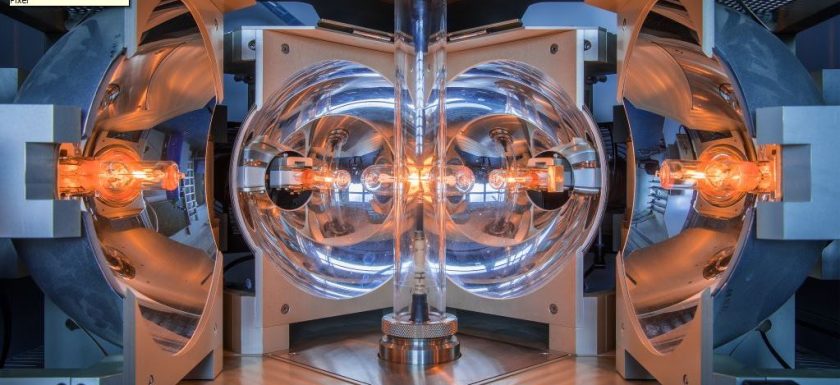
Even if quantum physics is well established since roughly ninety years, there are still some quantum effects in matter which have been theoretically predicted but up to now not yet seen experimentally. It was the physicist Hans Bethe, who first described theoretically in 1931 what happens in a one dimensional quantum spin system: under certain conditions, magnetic excitations may interact and give rise to a collective excitation, known as “Bethe strings”. But in real matter, strictly one dimensional systems are rare, so Bethe strings have not been a common phenomenon.
Now those Bethe strings have been discovered for the first time experimentally by the Augsburg physicists Prof. Dr. Alois Loidl and Dr. Zhe Wang and partners from Berlin, Dresden, Mumbai, Nijmegen and San Diego. The scientists did experiments on samples provided by the HZB team of Prof. Dr. Bella Lake, who also looks for hidden quantum effects in matter.

The samples consisted of SrCo₂V₂O₈ crystals, in which the cobalt ions form a one-dimensional spin chain. This spin chain features anisotropic magnetic interactions and is known as antiferromagnetic Heisenberg-Ising chain. The crystals, which are unusually big and of excellent quality, were obtained from powder samples with the help of a zone melting furnace at HZB (shown in the upper picture). With extremely high magnetic fields up to 28 Tesla, at the High Field Magnet Laboratory in Nijmegen, the collective excitation could be achieved and further experiments could prove their nature as Bethe strings. The international team has published these results in “Nature”. Even if no immediate application is on the horizon, it is a step forward in understanding matter on a deeper level.
More information: Zhe Wang et al. Experimental observation of Bethe strings, Nature (2018). DOI: 10.1038/nature25466
